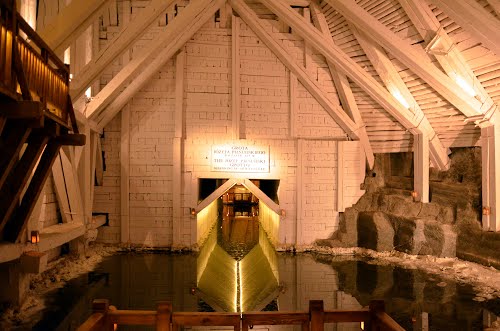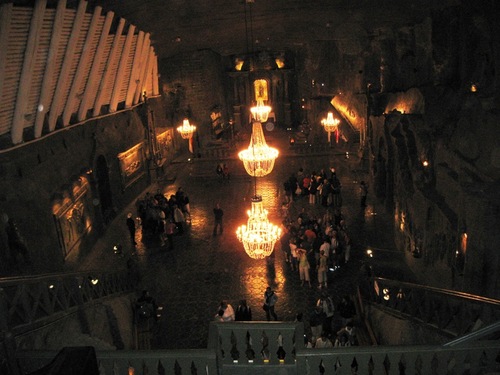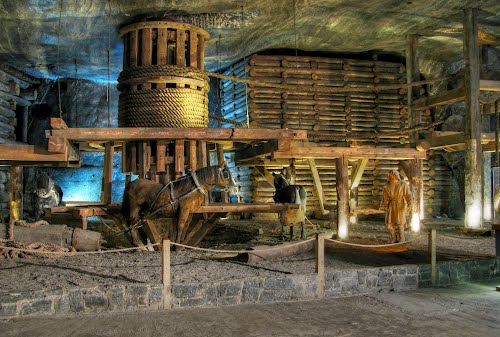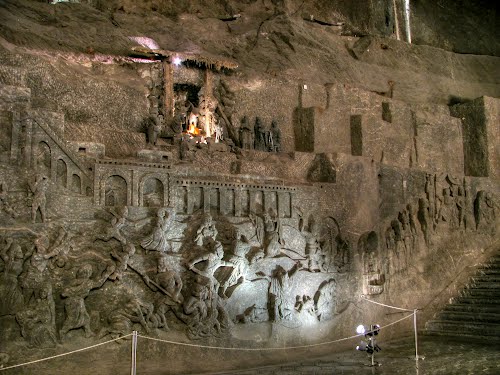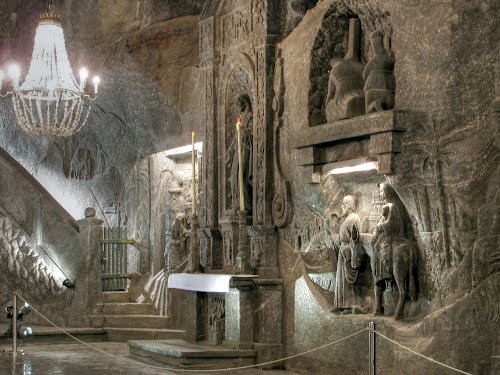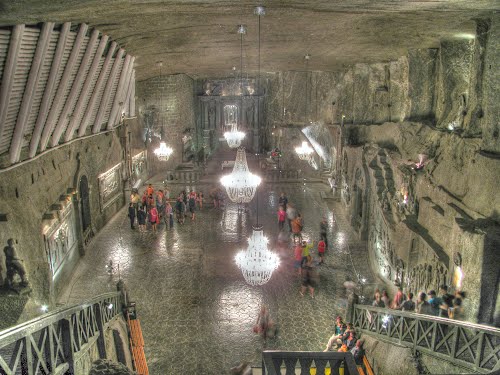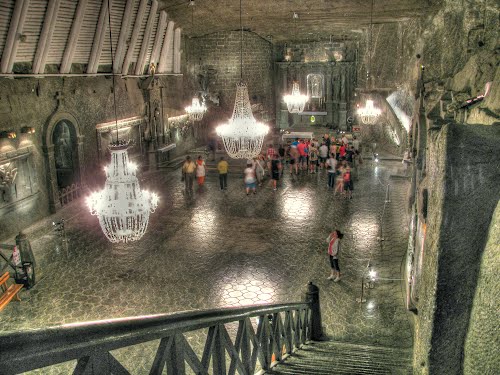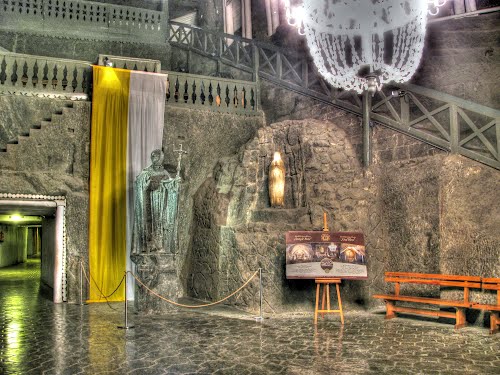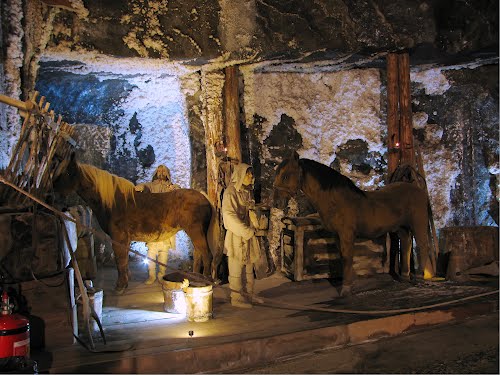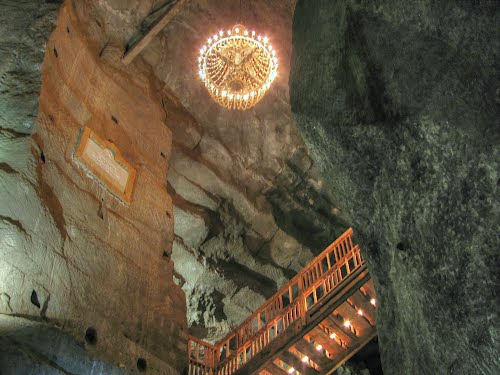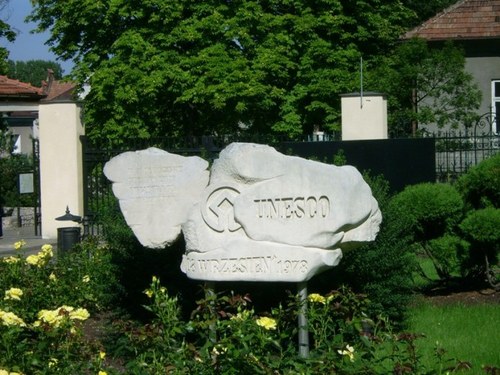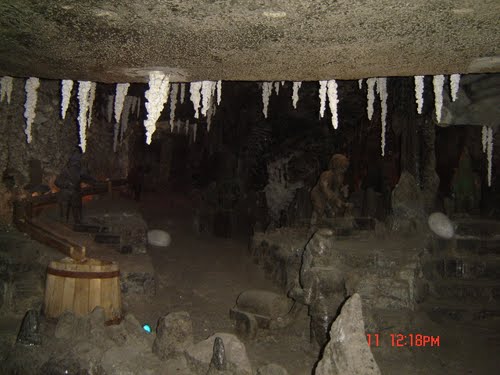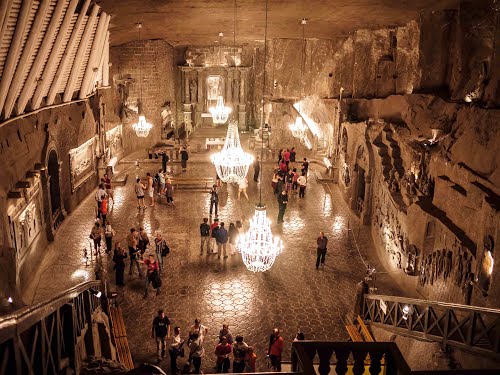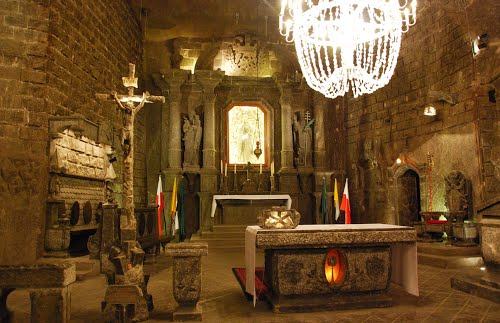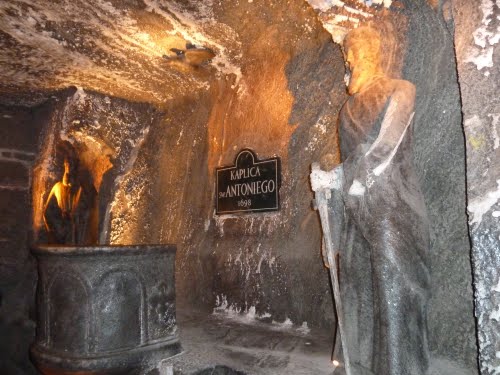The Wieliczka Salt Mine, located in the town of Wieliczka in southern Poland, lies within the Krakow metropolitan area. Opened in the 13th century, the mine produced table salt continuously until 2007, as one of the world's oldest salt mines in operation. Throughout, the Royal mine was run by the Zupy krakowskie Salt Mines company.
Commercial mining was discontinued in 1996 due to low salt prices and mine flooding.
The mine's attractions include dozens of statues and four chapels carved out of the rock salt by the miners. The older sculptures have been supplemented with new carvings made by contemporary artists. About 1.2 million people visit the Wieliczka Salt Mine annually.
The mine is one of Poland's official national Historic Monuments (Pomniki historii), as designated in the first round, 16 September 1994. Its listing is maintained by the National Heritage Board of Poland.
The Wieliczka Salt Mine helped inspire the Labyrinth scenes in Boleslaw Prus' 1895 historical novel, Pharaoh. Prus combined his powerful 1878 impressions of the salt mine with the description of the ancient Egyptian Labyrinth, in Book II of Herodotus' Histories, to produce the remarkable scenes found in chapters 56 and 63 of his novel.

